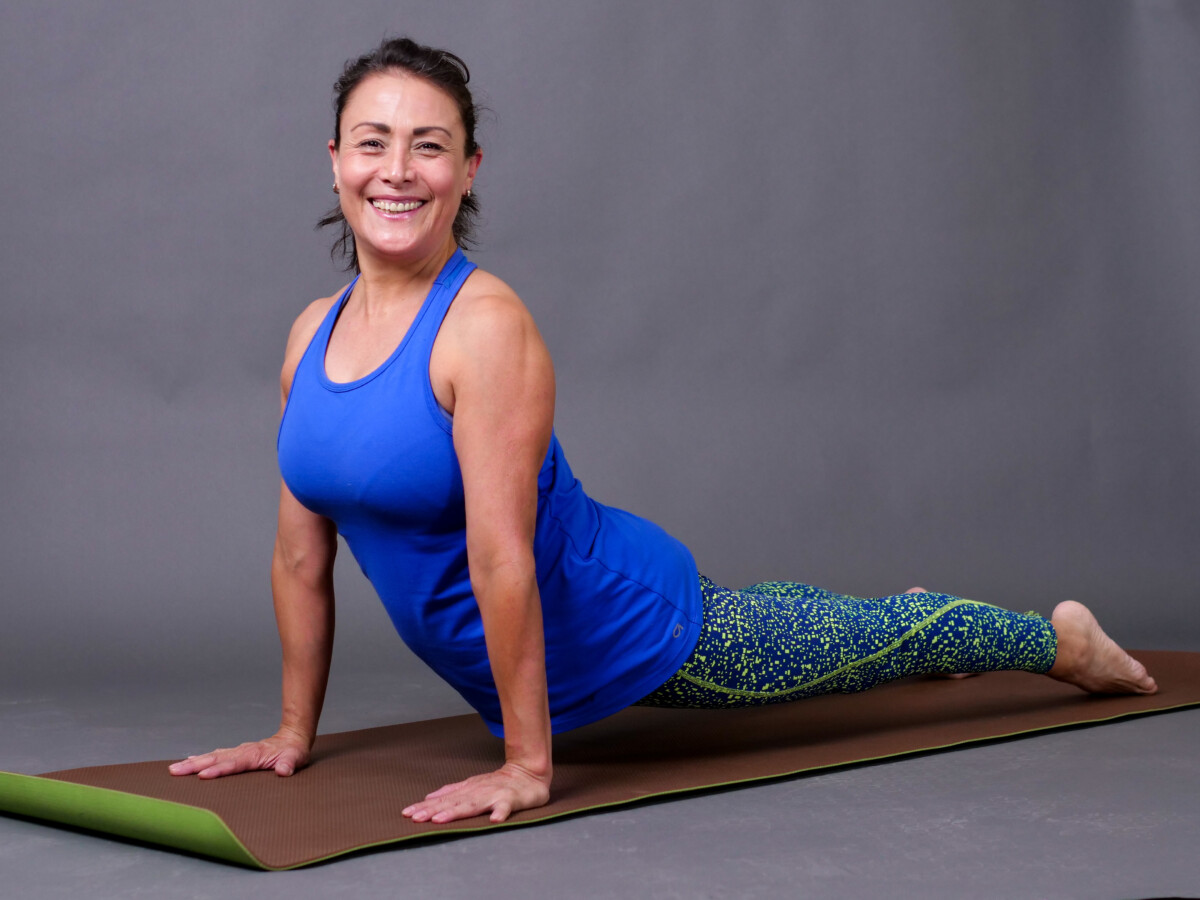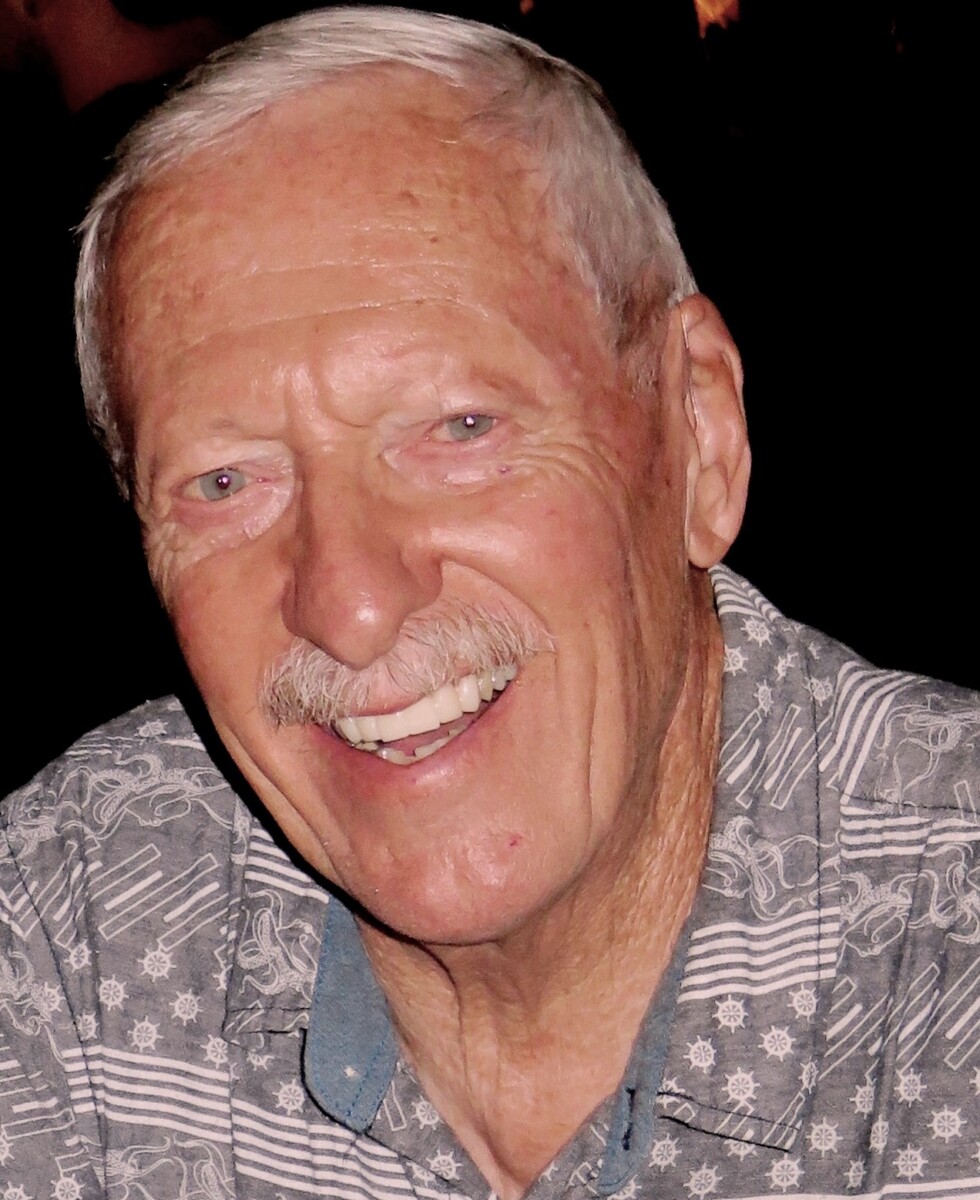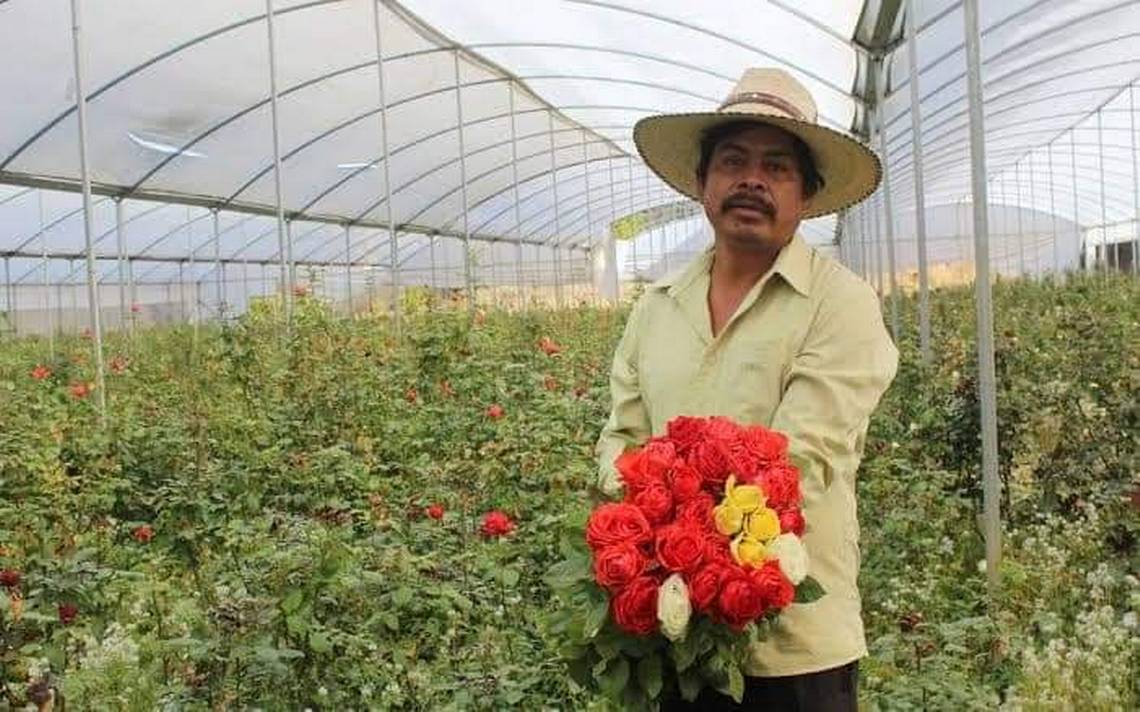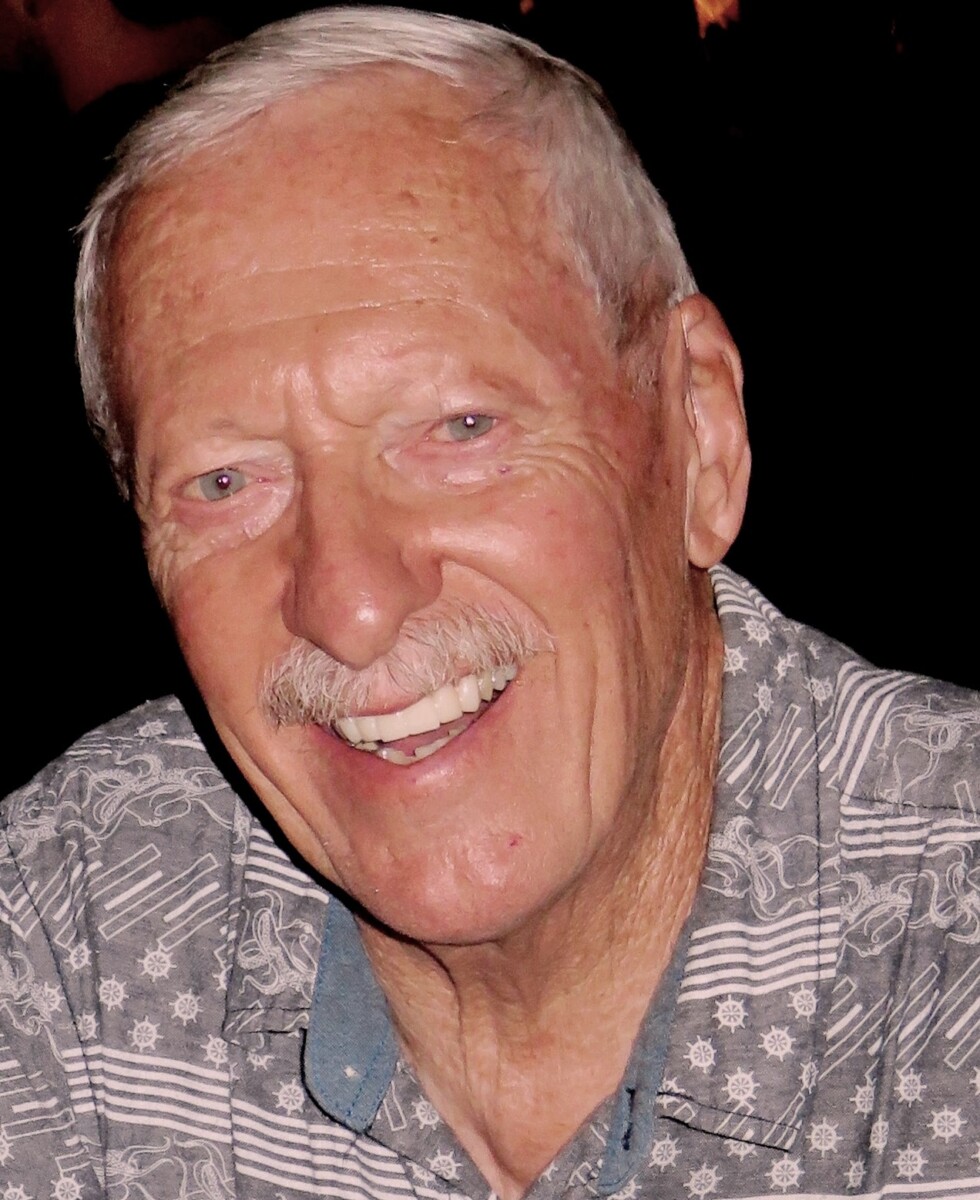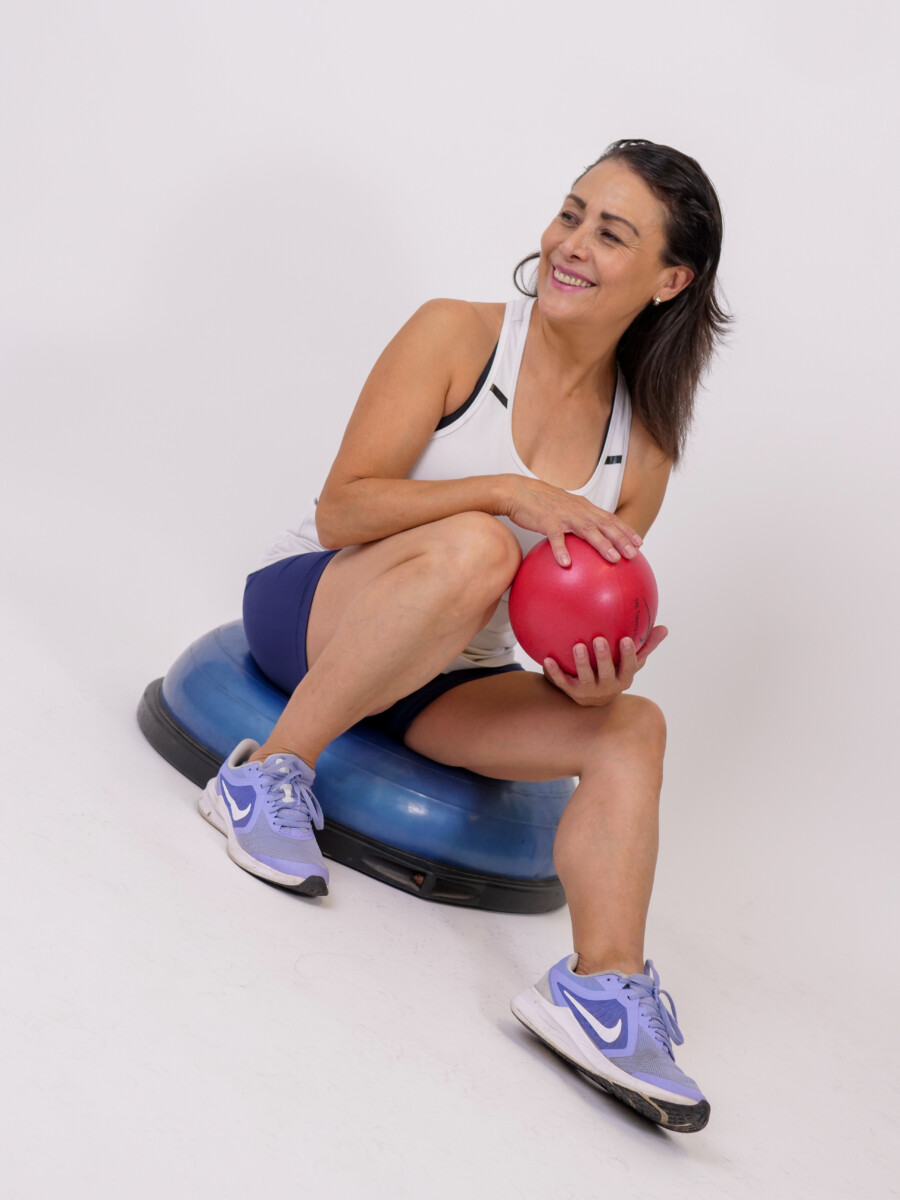opinión
Opinion: From North to South
The federal government will hire 500 specialized Cuban doctors to provide coverage to marginalized areas. Photo: Courtesy.
Abigail Angélica Correa Cisneros
In response to the ongoing lack of medical personnel and the low participation of Mexican doctors providing service to marginalized areas, President Andres Manuel Lopez Obrador’s solution is to hire foreign doctors. Recently, the President informed the public that Mexico will hire 500 Cuban doctors.
According to the President, this is necessary because existing Mexican doctors refuse to provide healthcare in communities in marginalized areas. López Obrador estimated that there is a deficit of 50,000 health professionals. He blames this deficit on the previous administrations and the systemic corruption that prevailed for 36 years resulting in a failure to invest in health and education.
The President’s announcement triggered a wave of criticism from some doctors who attribute the problems to multiple factors, such as «insecurity, the lack of medical equipment in these areas, and the low salary offered to doctors for practicing their profession.» These comments are taken from interviews with doctors and from forums used by doctors.
Data from the National Occupation and Employment Survey (ENOE) for the second quarter of 2021 show that Mexico has 305,418 doctors, of which 54 percent are men and 46 percent are women. The data also show that of the total, 67 percent are general practitioners and 33 percent are specialists in some branch of medicine.
Mexican doctors say that there are enough doctors to meet needs, but that many are unemployed because the health system does not hire them. They add that in public hospitals, many are hired as temporary personnel to cover absences or vacations, and so they have no benefits and are also paid a miserable salary.
Furthermore, they recalled that during the pandemic, they responded to the government’s call to attend to those affected by Covid-19, and the long lines revealed the extent of unemployment in the sector. At the end of the emergency, they were laid off.
It is interesting to note, however, that data from an analysis conducted externally by the Organization for Economic Cooperation and Development (OECD), show that Mexico has just 2.4 doctors per 1,000 inhabitants compared to a worldwide average of 3.4. Additionally, Mexico has less than a third of the number of nurses and hospital beds per 1,000 inhabitants compared to the average. So, according to the standards of the OECD, Mexico ranks among the lowest countries regarding the ratio of healthcare workers to population.
Similarly, in terms of remuneration, Mexico is also lacking. For medical personnel, the average pay per hour worked is 122 pesos. Remuneration increases with an increase in level of education: those employed as doctors and who have a bachelor’s degree receive a monthly average of 17,422 pesos; those with a master’s degree receive an average of 21,041 pesos and those with a doctorate receive an average of 26,695 pesos per month.
The Covid-19 pandemic exposed in our country the highest excess mortality among OECD countries, as well as significant disruptions in the provision of other health services: in 2020 the pandemic caused a decrease in health care services and the number of face-to-face medical consultations fell by 9 percent compared to the previous year.
The crisis also highlighted the shortage of healthcare workers and the urgent need to invest more in the coming years to improve primary healthcare and disease prevention, as well as to strengthen the resilience and capacity of healthcare systems.
For 2022, the federal health sector budget increased 14.6 percent, with 824 thousand 181 million pesos allocated. Almost 10 percent (9.1%) of this increase is marked for the IMSS – Bienestar program. Depending upon which providers of services receive these funds and the efficiency with which the funds are spent, this increase could result in more equitable distribution of federal monies so that both the quality and availability of medical care and services improve for populations living in rural and marginalized areas.
The Center for Economic and Budgetary Research (CIEP) indicated in an analysis that the increase in the Federal health sector budget for 2022 for IMSS – Bienestar needs to result in an increase in the rate of care, and ambulatory and hospital medical assistance services, since these areas have all seen a downward trend starting before the pandemic. Since 2019, part of the decline in these health services has been due to the closure of medical units in urban areas.
Negative criticisms from Mexican healthcare workers are due to xenophobia and misinformation. The reality is that this support from Cuba, being promoted by our government, is indeed required. The medical care and attention provided by the 700 Cuban doctors who served in our country during the pandemic are evidence that the health of Mexicans living in remote areas will be in good hands, and that this type of collaboration is necessary.
Other important issues, which the government should not neglect, continue to be violence and the lack of opportunities in the country.
From the Center
By the close of 2021, Mexican farmers had achieved production of 268.4 million tons of food from the land, which marked an increase of 1.3 percent over the previous year. The Ministry of Agriculture and Rural Development reported that the increase in production was driven by higher yields of grains and oilseeds, used in both industry and as fodder. The Ministry’s report highlighted that the area sown during the agricultural year 2021 constituted 21,584,000 hectares, which generated a production volume with a value of 750,778,000 million pesos; 8.3 percent more compared to the previous year (693,072,000 million pesos).
Translated by Rebecca Zittle
Opinión: Salud y Bienestar
Por Leticia Trejo
Hay oportunidades que nunca vuelven. Hace ya muchos años estaba paseando por los pasillos de la Feria Internacional del Libro de Guadalajara (FIL), si algunos de ustedes la han visitado saben que es enorme; en un stand vi un libro con un título que me atrajo: Anatomía del dolor, era bastante voluminoso y de un precio alto; como seguramente le pasa a mucha gente me dije a mi misma: regresaré después de ver más libros y claro que lo que pasó es que cuando traté de volver ya no recordé en qué pasillo ni en qué editorial lo había visto. En esos tiempos yo estaba atravesando por periodos intensos de dolor articular y muscular al grado de pensar que seguramente tenía artritis, que mis años como deportista y profesora de fitness grupal me estaban pasando una gran factura. Lo que pasó en los siguientes años es que en realidad esos dolores intensos se convirtieron en grandes maestros que me obligaron a conectarme más conmigo misma, buscar información, estudiar y aprender. Les comparto algunos de mis descubrimientos ya que el dolor corporal puede tener varias fuentes de alimentación:
1.Fisiológico, solo por poner algunos ejemplos: es muy común confundir un dolor pensando que es la espalda baja, cuando en realidad es una inflamación del colon (colitis), confundir un dolor pensando que tenemos gastritis porque nos arde al comer cuando en realidad puede ser una inflamación en el páncreas (pancreatitis) o sentir que nos duelen los intestinos cuando en realidad nuestras vías urinarias tienen algún bloqueo o alguna infección. Cuando los riñones tienen alguna insuficiencia duelen mucho los pies (tobillos, dedos de los pies) y se inflaman una o varias articulaciones. Es claro que cualquier proceso inflamatorio va a causar dolor y este proceso a veces es causado por nosotros mismos.
2. Emocional, los estados intensos emocionales, sobre todo los considerados de baja frecuencia energética como la ira, el rencor, la culpa, el odio y la tristeza (entre otros), generan encogimiento o acortamiento en los tejidos conectivos del cuerpo principalmente el tejido miofascial (documental de la cadena alemana DW las fascias, un mundo bajo la piel). Estos acortamientos roban espacio interior a órganos y músculos importantes por ejemplo el diafragma torácico que es el músculo más importante de la respiración y eso genera dolor.
3.Por estrés, el estrés, aunque es una respuesta sana y normal ante las amenazas, genera el despliegue de ciertas hormonas que nos ayudan a reaccionar ante la situación estresante. El cortisol, la adrenalina, la noradrenalina, entre otras, son hormonas que fluyen al torrente sanguíneo, aumentan la frecuencia cardíaca, aceleran el ritmo de respiración y nos ponen en alerta y esto está muy bien cuando la amenaza es real, pero te pregunto, querido lector: ¿cuántas veces has sentido estrés IMAGINARIO? Por situaciones que no están sucediendo, pues bien, aunque estas situaciones no están pasando de todas formas generan la respuesta hormonal y cuando ésta es crónica y ocurre repetidamente todos los días provoca inflamación celular y esto a su vez dolor constante.
Mis recomendaciones giran en torno a que: a) aprendas a escuchar a tu cuerpo para saber qué necesita, b) realices auto observaciones de tus emociones y aprendas a no darles fuerza a las improductivas que no producen bienestar, c) vivas en tiempo presente, disfruta que en este segundo estás bien y cuando las amenazas si estén ocurriendo dale las gracias a tu cuerpo por reaccionar sanamente ante ellas.
Looking at Life in Lakeside:
By: Patrick O’Herffernan
Elsewhere in Laguna are the details of the towing and impounding of a local Expat’s car after a minor non-injury accident. The story chronicles a bizarre 10-month journey through a bureaucratic hall of mirrors at the Jalisco Ministerio Público that is still not over.
The Chapala cop who mysteriously arrived at the accident scene while the parties were working out a deal did not have to tow Amy E’s car. Why he towed the car we won’t know (he works for another agency now), but that unnecessary action set off a chain of events that , to my mind, has laid bare the worst – and the best – in the Mexican government.
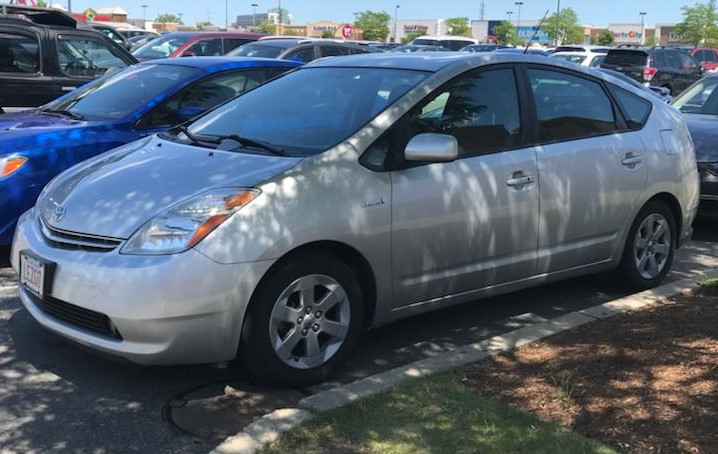
45: weeks Amy E.’s car has been in jail
The system of initiating a tow by a local cop, the actual towing by a private company to a lot regulated by the State, and release of the car in the hands of a State Agency whose priorities are elsewhere, all together are a recipe for disaster. Amy E. is going through this disaster now. The agency doesn’t give a damn about the citizens, the staff is incompetent (at least in this case) and the local government that is closest to the people is powerless.
This has to change. State law should be changed to devolve the authority for releasing towed cars to a local agency. Police at every level should not be allowed to tow cars that are drivable unless they were involved in a crime or an injury. And cars not involved in a crime or an injury accident should be released to the owners within two weeks by the impound lot, whether or not the government has generated the needed documents.
I know – good luck with that. But there is a small silver lining to this cloud – the responsiveness of local officials. Amy E. was able to contact local officials who, rather than saying hers was a state problem, attempted to intervene on her behalf, spending considerable time in the process. While the intervention failed, it is heartening to see that the government closest to the people – the municipality – listens to them.
The bottom line here; Mexicans will tell you if you are in an accident and no one is hurt, leave. Don’t leave your car at the scene for a cop to tow while you work out a deal with the other driver, they say. I support a change in the organic law controlling the Ministerio Público; that will make life a lot easier on everyone. In the meantime. Watch this space to help Free Amy E’s car.
OPINIÓN: EL GRITO EN LA LAGUNA
El Lago de Chapala. Foto: Héctor Ruiz.
Por: Daniel Jiménez Carranza
En la actualidad el panorama internacional actual nos conduce por múltiples senderos que explorar, que no necesariamente son de tránsito alentador, en un extremo, continúa la acometida rusa sobre un país como Ucrania, que por su posición territorial de frontera con Rusia, contiene en sus localidades, una población ambigua entre el origen de sus raíces rusas y europeas, en donde Kiev, su capital, ha mantenido desde años, un acoso y ataque a las repúblicas separatistas pro rusas Donetsk y Lugansk, que ha detonado con la intervención rusa, como consecuencia de la anexión de Ucrania, al bloque de la OTAN, al que Rusia ha expresado su total desacuerdo, por representar ello un obvio riesgo a su integridad territorial, conflicto equiparado al surgido entre EE. UU. y Rusia por la pretensión de la instalación de misiles rusos en la isla de Cuba, en la década de los sesentas, y cuyo resultado no fue necesariamente un enfrentamiento bélico, sino un acuerdo pacífico, en donde una de las partes hubo de ceder a la razón.
Asimismo, en otro abanico de acontecimientos, hemos presenciado el recorrido del presidente de México por países Centroamericanos y del Caribe, donde hemos encontrado una absoluta resonancia con el proyecto de integración Americana, misma que se ha visto opacada por el anuncio de la Casa Blanca, de no permitir la participación de países como Cuba, Venezuela y Nicaragua, por ser países que “no respetan la Democracia”, argumento claramente inválido, pues el propósito de esta Cumbre es de unir, de agrupar recursos y esfuerzos en aras de consolidar un bloque económico, político y social que contribuya al fortalecimiento de las condiciones de vida de la población en cada país, y con ello evitar la migración hacia polos de mayor desarrollo, abatir la producción de estupefacientes y proliferación de redes criminales que representan un serio fenómeno de descomposición social; ajustes, todos ellos, que contribuirán a mejorar necesariamente las condiciones económicos, políticas, sociales en el entorno de todos los países.
No podemos dejar de lado las desviaciones democráticas de algunos países, que en la práctica son obviamente identificados por el sistema político que ejercen, sin embargo, este tipo de acontecimientos no son únicos en éstos, la historia reciente nos muestra con claridad este tipo de anormalidades en diferentes países que de alguna u otra forma, encubierta o no, adolecen del mismo tipo de prácticas.
Tampoco vamos a emplear este espacio en polemizar sobre la conducta de gobiernos de los distintos países, sino de otorgar a un evento de la magnitud de la Cumbre de las Américas, la importancia trascendental que representará como bloque unido continentalmente, sin exclusión de país alguno.
Opinion: From North to South
After two years of the pandemic, the flower-producing sector begins to recover. Photo: Internet.
By: Abigail Angélica Correa Cisneros
This Mother’s Day, ornamental flower producers managed to distribute over 3.8 billion stems of chrysanthemum, rose, gladiola, lily, gerbera and sunflower, produced at the end of the 2021 agricultural cycle.
The sector is just recovering, after two years of depressed sales due to the Covid-19 pandemic and the recent droughts. The volume produced last year was valued at almost 6.4 billion pesos, with the State of Mexico generating just over 4.7 billion pesos of the total (74.2 percent), a figure that placed it as the top producing state in the country.
On May 10, thousands of mothers throughout Mexico received a floral bouquet or decorative ornament as a token of love. Thanks to the beauty of flowers, their aroma or cultural significance, flowers are the most in-demand gift of Mexicans to show love on Mother’s Day.
According to the Ministry of Agriculture and Rural Development, chrysanthemums had the highest production volume at the end of last year with over 1.4 billion pieces, of which the State of Mexico contributed 92.3 percent, far ahead of Puebla’s 6.2 percent and Morelos’ 1.0 percent.
Rose production closed 2021 with just under 1.4 billion stems, an increase of 5.6 percent compared to the previous year. The states of Mexico, Puebla and Morelos led production with 77.3, 7.5 and 7.3 percent, respectively.
In the same period, 726,729,696 gladiola stems were produced. The species ranked third nationally in value and volume of production. Puebla, State of Mexico and Morelos were the main producers in 2021 with 43.9, 33.4 and 13.8 percent shares, respectively.
In fourth place nationally is the gerbera, which is only produced in the State of Mexico. At the end of last year, growers reached a volume of 192,567,744 stems, which marks an increase of 4.6 percent compared to 2020.
Lilies ranked fifth nationally, with a production of 109,749,312 pieces, which is equivalent to an increase of 3.6 percent compared to 2020. The State of Mexico, Veracruz and Mexico City led production with 84.5, 13.6 and 1.8 percent, respectively.
Sunflower production saw an increase of 25.7 percent from 2020 to 2021, with a volume of 46,841,760 sunflowers produced. This marks the highest increase in production of all floral species. The State of Mexico contributed 25,893,000 flowers; 55.3 percent of the national total.
Another variety in high demand is the Dutch tulip, which is produced only in Mexico City. Production of this species closed 2021 with 455,500 plants, which generated a production value of 15.9 million pesos.
Meanwhile, production of the orchid – considered an exotic species – reached 946,923 plants and a value of 152 million pesos in 2021. This species is only produced in the states of Jalisco (93.1 percent) and Tamaulipas (6.9 percent).
From the Center
Yesenia Mollinedo Falconi and Sheila García Olivera, from the news outlet El Veraz, in Veracruz, were shot by hired killers. The two journalists were mothers of families. Mothers of missing persons marched from the Monumento a la Madre (Monument to the Mother) to the Angel of Independence to demand «truth and justice» for their loved ones. They highlighted the words of the Mexican UN representative of the Office of the United Nations High Commissioner for Human Rights (ONU-DH), Guillermo Fernández Maldonado: «there are no more mothers in the world looking for their children than in Mexico.»
Translated by Rebecca Zittle
Looking at Life in Lakeside:
By Patrick O’Heffernan
The 2000 presidential election was one of the closest and most controversial in US history, and expat votes largely determined its outcome. Everything hinged on Florida where Bush’s lead has shrunk to 300 votes. But in the totals there were hundreds of overseas ballots that had arrived past Florida’s deadline for mail in ballots. Florida election officials rejected these ballots, giving Gore the lead. The United States District Court for the Northern District of Florida famously (or infamously) overturned the rejections, giving Bush Florida with a 537-vote lead and giving him the presidency, based on overseas ballots.
The current election season is now underway as state primary candidates in several states are on the airwaves battling it out. And those primaries are more important than ever because of demographic shifts and gerrymandering. States have redrawn 327 of the US House’s 435 districts in the redistricting process so that only 26 of those districts are considered to be highly competitive. When the court battles are over, that number may rise to 35 competitive seats, meaning that in the remaining 400 Congressional seats, the primary election determines the winner.
So voting now in the primary elections in your state may be the only chance you get to weigh in on Congressional candidates. The same is even more true for the state legislature and is also true for a number of governorships. The lesson is that NOW is the time to register and vote, not in November (do that too!). If you are registered, get your ballot and mail it or email it in. If you are not registered, go to VotefromAbroad.org and register. If you don’t know, go to VotefromAbroad.org and find out. And if you are confused, go to the VoteFromAbroad tent at the Lake Chapala Society Monday morning for all the help you need.
Expat voters can and have determined elections. Now is the time to vote.
Salud y bienestar en la Ribera
Leticia Trejo.
Sé que no a todas las personas nos agrada la actividad física, pero todos aspiramos al bienestar; con tanta oferta de disciplinas de ejercicio y fitness puede ser difícil elegir, así que nos decidimos por la más “fácil” que es correr. En nuestra mente generamos una imagen de nuestra ropa deportiva, tenis y los atractivos lugares en donde realizaremos nuestro sueño de bajar de peso, mejorar condición cardiovascular, y quizás, por qué no, de conocer gente nueva para compartir esta actividad. Mi recomendación más fuerte es ¡no lo hagas!, sin antes visitar a algunos especialistas o leer de fuentes aprobadas la información que necesitas para que esta actividad sea segura.
¿Estás enterado si tu pisada es prona o supina?, ¿sabes si tus rodillas tienen posición genus valgo o genus varo?, ¿alguien te ha mencionado si tienes escoliosis? Todas estas condiciones anatómicas-posturales afectan de manera negativa la salud de tus articulaciones, y claro, antes de un año los dolores te harán tomar la decisión de declinar tus buenas intenciones de mejorar tu salud. Pero, el problema no es empezar a correr sino no tener una estrategia adecuada.
Lo primero es visitar a un ortopedista para que determine si tu tipo de pisada necesita de alguna plantilla adicional a los zapatos deportivos que quieras adquirir; incluso en algunas tiendas deportivas cuentan con un aditamento que realiza una evaluación sencilla para saber qué tipo de tenis te conviene comprar. El mismo ortopedista puede también informarte si tus rodillas tienen alguna posición inconveniente para correr, y en este momento voy a hacer una pausa para explicarte algo MUY importante:
Las rodillas dependen casi totalmente de la articulación de la cadera, el fémur (el hueso más largo del cuerpo y de las piernas) cuenta con dos cabezas superiores de las cuáles una de ellas es completamente redonda y se inserta en la cavidad de la pelvis llamada acetábulo formando ángulos diversos que predisponen la posición de las rodillas. Aunque esto no puede modificarse, ya que es una construcción de nacimiento, si tenemos la capacidad de mejorar esta integración de acetábulo – cabeza del fémur – rodilla – pies. Trabaja con ejercicios que fortalezcan las cuatro caras de tus piernas: interna, externa, lateral derecha y lateral izquierda, así como los rotadores externos de tu cadera tanto con ejercicios de fuerza como con ejercicios de elasticidad.
Después de tener el conocimiento adecuado en los puntos anteriores puedes visitar a un fisioterapeuta que revise algunos aspectos de tono muscular, posición de la columna, relación de la cintura pélvica con la cintura escapular y él o ella te hará las recomendaciones adecuadas.
Adquiere un pulsómetro (medidor de la frecuencia cardiaca) para que en base a tu peso, estatura y edad puedas medir los latidos de tu corazón. Este aparato digital te va a indicar, incluso a veces con colores, la frecuencia cardiaca en donde tu actividad será más eficiente, latidos debajo del mínimo no son eficientes, pero tampoco latidos arriba de tu máximo permitido. Y te recuerdo: EL SUDOR ES AGUA, no creas que por sudar mucho estás quemando grasa y mejorando tu condición física.
Por último, sé paciente, aplica la regla: Gradualidad – adaptabilidad – mantenimiento. Disfruta el proceso y conecta con todas tus sensaciones corporales para que aprendas a escuchar a tu cuerpo y sepas qué necesita y qué podría estarlo dañando.
Opinion: From North to South
President Andrés Manuel López Obrador seeks to push an electoral reform initiative. Photo: Government of Mexico.
By: Abigail Angélica Correa Cisneros
Dissatisfaction with Mexico’s democracy validates President Andres Manuel Lopez Obrador’s proposal to reform the electoral law and reduce unjustified spending by up to 24 billion pesos.
Is this viable and positive for the country two years before the change of government? It will be difficult for legislators to approve the changes being sought and the proposal would remain only an attempt at a transition to more reliable institutions.
However, a policy change of this size is essential. Throughout the neoliberal period, there has been evidence the government could have functioned successfully had it not been complicit in fraud. Examples include 2006, when the Federal Electoral Institute was complicit with the Electoral Tribunal of the Judiciary of the Federation. Likewise, in 2012 with the massive vote-buying led by the Institutional Revolutionary Party.
This reform would modify 18 constitutional articles and include seven transitory articles. The National Electoral Institute, or INE, would become the National Institute of Elections and Consultations. It would eliminate 200 plurinominal deputations [a proportional representation in which votes are cast and counted for a list of named candidates collectively, rather than for individuals], list senators, local public electoral bodies and state electoral tribunals, reduction of the number of members of local congresses and regidurías, in addition to the establishment of popular vote as a mechanism for the election of the councilors of the electoral body and of the magistrates of the Electoral Tribunal of the Federal Judicial Power.
Another significant change, which makes approval of the proposal more difficult, would be the end of public financing for the ordinary activities of the parties, which would only be given a budget to face the elections.
The country’s democracy has been manipulated by the interests of those who have been governing for decades with the sole purpose of plundering the nation. On numerous occasions, it has been demonstrated that this electoral system does not work. This proposal intends, among other points, to reduce the number of councilors from 11 to seven and that these be elected, together with the magistrates of the Electoral Tribunal, by popular vote. The election would take place every six years, before the presidential elections, from 60 names proposed by the Executive Branch (20), the Judicial Branch (20) and the Legislative Branch (10 from the Chamber of Deputies, 10 from the Senate).
Likewise, the Chamber of Deputies is to be reduced from 500 to 300 legislators. The deputies would be elected from lists of candidates nominated by the parties and independent candidates in each of the 32 states.
The Senate of the Republic is contemplated in 96 senatorial seats out of 128; eliminating the current National List and generating that the three senatorial seats in each entity are elected from state lists.
Currently, INE owes a lot to Mexicans. It failed in the recent call for the revocation of mandate. In every electoral process there are reports of falsification of minutes. Councilors have been accused of obeying particular interests, especially those of the PRI. Their credibility is at rock bottom, according to the opinion of millions of Mexicans. The institution could use a change and a considerable saving in its budget.
Translated by Mike Rogers
OPINIÓN: EL GRITO EN LA LAGUNA
El Lago de Chapala. Foto: Héctor Ruiz.
Por: Daniel Jiménez Carranza
Sin duda, actualmente estamos afrontando las consecuencias de una crisis generada en principio por la pandemia, y enlazada con el conflicto bélico en Europa, que ha provocado incertidumbre y desestabilización en las economías a nivel global, marcadas por el incremento del desempleo, incremento en el precio de los combustibles, escasez de alimentos, y que puede complicarse si es que este fenómeno no llega a una solución pacífica ausente de aquéllas respaldadas por la proliferación armamentista de sus actores.
Un conflicto bélico de mayor magnitud, definitivamente provocará una conflagración a nivel mundial, pues mayor número de países se involucrarán, los armamentos empleados serán de mayor calibre, a tal grado que desembocarán en una confrontación nuclear, en donde no habrá vencedores ni vencidos, pero sí muerte, desolación y destrucción del hábitat, cuya regeneración llevará años.
La aportación de capital y armas para Ucrania, no ayudarán a resolver el conflicto, sino todo lo contrario, es preciso encontrar una alternativa válida a través de una comisión de paz integrada por países representativos y la ONU, para resolver este enfrentamiento .
La política no intervencionista de nuestro país, se ha mantenido firme y sólida ante tales circunstancias, apoyada en el respeto de los países al mantenimiento de su integridad territorial, lo cual es notablemente condenable, en el caso de la agresión armada como la que se ha fraguado en Ucrania.
Los efectos económicos y sociales de esta confrontación militar y la pandemia, han puesto de manifiesto la necesidad de fortalecer los lazos regionales de integración entre países que por su condición geográfica, se alineen en un bloque común que internamente se fortalezca y sea autosuficiente, y que sin duda, la propuesta del presidente López Obrador, de integrar no sólo a los países Latinoamericanos, sino a todo el continente, incluyendo EE.UU. y Canadá, sería un logro trascendental que beneficiaría y complementaría a todas las economías de países que en la actualidad se encuentran a la zaga de cualquier posibilidad de remontar su condición social y económica como consecuencia de su incapacidad de explotar y comercializar adecuadamente sus recursos. Esta integración regional, deberá ser acompañada de la creación de un fondo de infraestructura con aportación de todos los países integrantes, que permita disponer de recursos a países carentes de los mismos, para construir carreteras, puertos, y todas aquellas instalaciones y equipos que requieran.
Salud y bienestar en la Ribera
Por Lety Trejo.
Algunos miembros de mi familia fuimos deportistas desde muy jóvenes, en un ambiente de clase media baja más bien pobre el deporte era lo que sacaba adelante a la juventud y además se considera una actividad saludable. Pero cuando no tienes un Entrenador Profesional, un Nutriólogo preparado y ni siquiera noción de la preparación adecuada para un Deportista, esta actividad puede ser peligrosa.
¿Por qué lo digo? Porque con los años me he dado cuenta que la gran mayoría de las personas que se aventuran al mágico mundo del ejercicio no tienen idea de lo importante que es la hidratación adecuada. Siempre nos dicen “toma agua” y uno toma agua: del garrafón o de las botellas de plástico que venden la diferentes marcas, bueno, pues estas aguas no hidratan, o por lo menos no lo hacen de la forma adecuada. Según la Nutrióloga Marcela Torres, especialista en Medicina Funcional y Epigenética existen dos tipos de hidratación: la celular y la intracelular y esta es la más importante, cuando tomamos aguas que pasan por muchos procesos de tratamientos, éstas pierden sus minerales naturales por lo tanto solo impactan al exterior de las células y además salen de forma muy rápida del organismo, en cambio, las aguas de manantial natural, o las que pasan por procesos de mineralización llegan al interior de las células siendo absorbidas y aprovechadas por todo nuestro organismo.
Decir que somos 75% agua es algo simplista, es reducir un proceso mucho más importante a algo casi irrelevante. En realidad somos SUSTRATOS, líquidos que pasan por procesos químicos que solo el organismo sabe producir, medir y combinar. La sangre, el plasma, la linfa, el líquido cefalorraquídeo y otros más son este 75% que tanto mencionan y dependen de una producción y distribución precisa y refinada de nutrientes, minerales y proteínas que cuando estamos sanos lo hacen en armonía. En el famoso libro La enfermedad como camino, de los Alemanes Thorwald Dethlefsen y Rudiger Dahlke describen al proceso de la enfermedad como una falta de armonía, no solo orgánica sino mental. A lo que puedo entonces agregar que nuestra calidad de sustratos depende del consumo adecuado de alimentos nutritivos, agua con todas sus propiedades, el tipo de pensamientos que tenemos, la actividad física y el descanso apropiado. Y esto hace que logremos el equilibrio para vivir en plenitud.
¿Sabías que puedes hacer tu propio suero hidratante en tu casa? La fórmula es muy sencilla:
Un litro de agua
Limones al gusto
Una pizca de sal rosa del Himalaya (o sal de Mar)
Una pizca de bicarbonato de sodio
Jarabe de agave como endulzante en cantidad moderada
Si la persona es hipertensa debe consultarlo con su Médico. La hidratación adecuada es la piedra angular del equilibrio orgánico de todos los seres en el planeta, no hagas actividad física intensa si no te has hidratado de forma correcta. Algunos de los síntomas por falta de hidratación pueden ser irritabilidad, confusión mental, desorientación, dolores de cabeza e insomnio. Consulta las tablas de cantidad de hidratación que proporciona Wikipedia tomadas de publicaciones médicas de importantes instituciones. Salud con agua querido lector.
© 2016. Todos los derechos reservados. Semanario de la Ribera de Chapala

